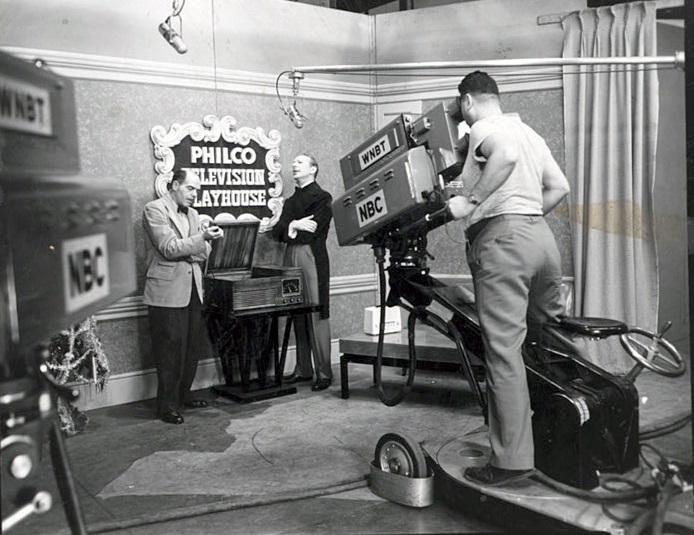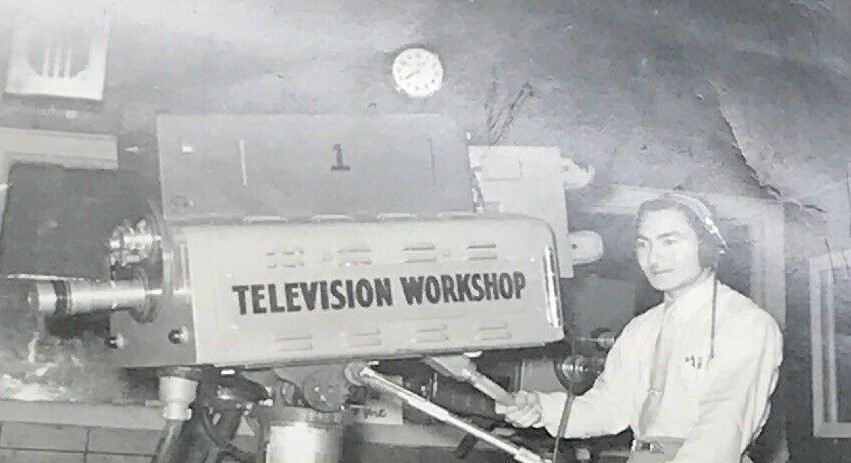THE NBC BUILT, ND-8G CAMERAS
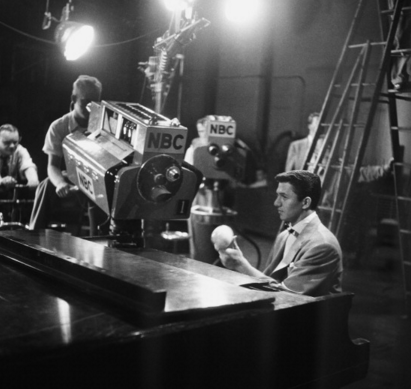
UPDATED March 3, 2023: Around 2010, I found a photo of an odd looking NBC camera in use in 1947. Not knowing what else to do, I passed around a picture to a group of what I consider REAL experts. There was a lot of discussion but finally Ed Reitan, who has the great Early Color Television site http://www.earlytelevision.org/Reitan/index.html came up with part of the answer and I have worked on developing the rest of a great back story and timeline and have found never before seen pictures, so here it is.
The reason they do not look very RCA, is because they were not built by RCA…they were being built by NBC engineers at 30 Rockefeller Plaza in New York beginning in late 1945! So now that we know WHAT they are, the next question that begs to be answered is WHY they are!
Well, if you think of RCA as the baker and NBC as the sandwich maker, the sandwich makers knew how hungry people were going to be for entertainment when the war was over, and that they would be coming for sandwiches is a big way. The problem was, most did not think the baker would be able to make bread fast enough. This is why the NBC New York engineers went ahead of RCA to get some hardware ready for what would happen, once World War II ended in 1945. RCA was projecting early ’47 as delivery dates on their new RCA TK10 and TK30 Image Orthicon cameras, but everybody else in TV thought that was a very optimistic date, given all the war shortages including white phosphorus needed for viewfinder and home receiver screens.
Remember…RCA was busy making radar and radio communications equipment for the U S armed forces and even when the war would come to an end, it would take many months or even a year or more to swing production back to the civilian needs. RCA did understand NBC’s point of view, which is why they gave them 4 of the new Image Orthicon tubes and the associated yokes and other equipment for their ND-8G cameras. Not only would it put them ahead with hardware, but getting the new parts into use would allow a longer runway for testing and trouble shooting before RCA went into mass production on their new TK series cameras.
In reality, NBC got 4 TK30s from RCA for the June 1946 Joe Lewis-Billy Conn fight and in October of ’46, the TK30 cameras were made available to broadcasters on a limited basis. At first, NBC had priority and got theirs first. Many of the new TK30s sold to non NBC affiliates came without viewfinders on delivery, until the white phosphorous shortage was overcome and back ordered viewfinders were delivered.
NBC built a lot of custom things for special uses inside the company and they cataloged their creations by giving them a New Development, or ND number. No one I’ve spoken to knows what this camera was actually called, or what its ND number was, but the reason I call it the NBC ND-8G is because the 4 cameras built were only used in NBC studio 8G in Radio City. That was the first large radio studio converted to use for TV because it was a 2 story studio and allowed room to add the light grids. Studio 3H was the first converted from radio to television in 1935 by RCA as the birthplace of experimental electronic television. Compared to 8G, it was only a third the size.
PART OF THIS REVISION IS TO SET THE RECORD STRAIGHT AND UPDATE THE TIME LINE OF THE CAMERA’S AND STUDIO’S USE. The article below from the July 1948 issue of RADIO AGE is the chief culprit in misreporting the timeline of the camera and the 8G studio history in places other than Eyes Of A Generation. It leaves people wondering why NBC would build these cameras in 1948, when RCA was supplying them with new TK10 and TK30 models as early as June of 1946!
THE PROBLEM…the author uses the official NBC studio dedication date of April 22, 1948 to base his assumptions on, BUT…radio studio 8G had been being used for television since at least May 9, 1946 when “Hour Glass” – television’s first variety show debuted, and NBC was building these cameras in late 1945.
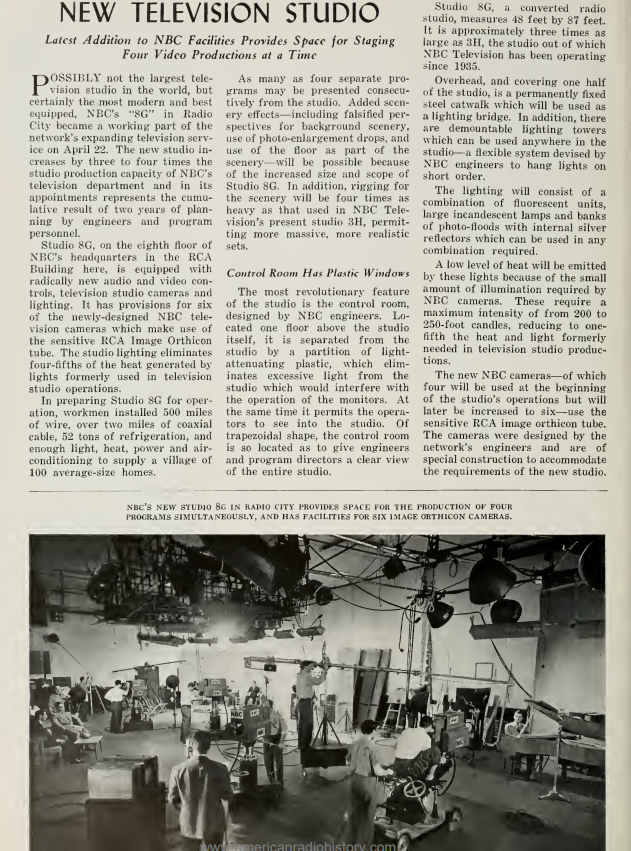
Now, all of the information in the article is true in 1948, but it was not true in 1946 when radio studio 8G had been drafted into use as a television production “stage” too. Daily radio shows were done here, usually with audiences (folding seats) in the early part of the day, but later the lights and ND-8G cameras rolled on to the studio floor and it was TV time.
One of the best ways to show you what was going on is to present this video…HERE, WE SEE FILM SHOT IN NBC STUDIO 8G, OF TV’S FIRST VARIETY SHOW “HOUR GLASS”. This was television’s first non-scripted entertainment show, and the performers here are the acrobatic, dancing Costello Sisters in their mini costumes. So, now, you’ll be one of the few people to not only have seen this show, but also to know what the show is and who the dancers are.
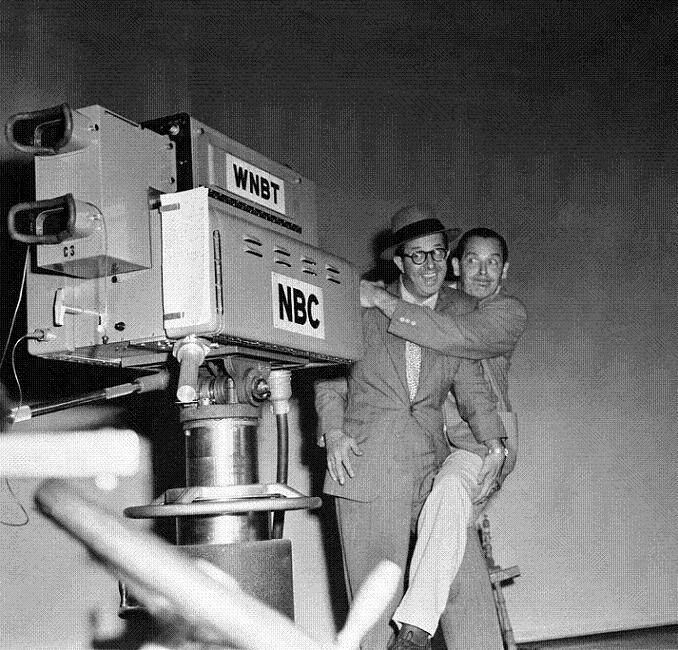
Milton Berle and Phil Silvers mug for this very unusual looking camera. Notice the 2 viewfinders and the right handle that closely resembles the RCA TK40 and 41 handles that allows focus control. The reason for the dual viewfinders was to give the cameraman the ability to see the scene in the viewfinder, even if the camera was up high.
Below, “Uncle Miltie” goofs around in front of one of these cameras and IS looking into the taking lens.
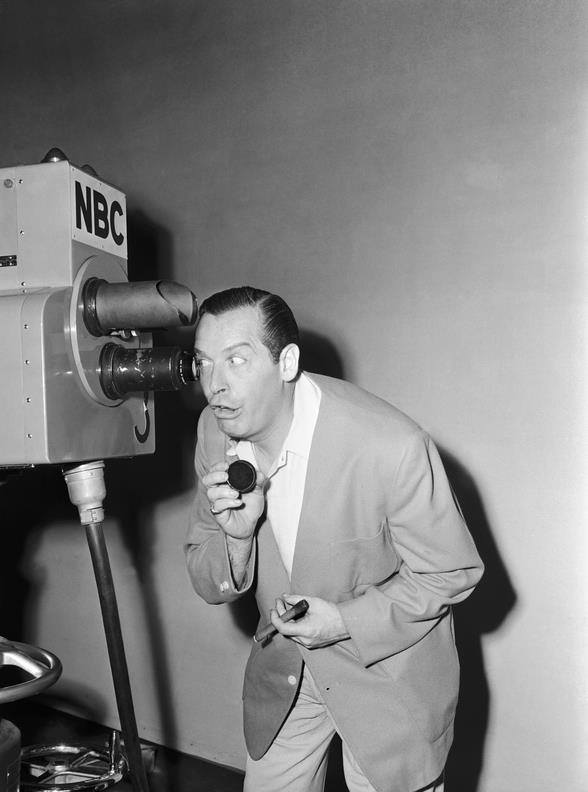

From the front, notice that it does have a turret but only three lens positions. The man at the piano I think is Buddy Greco.
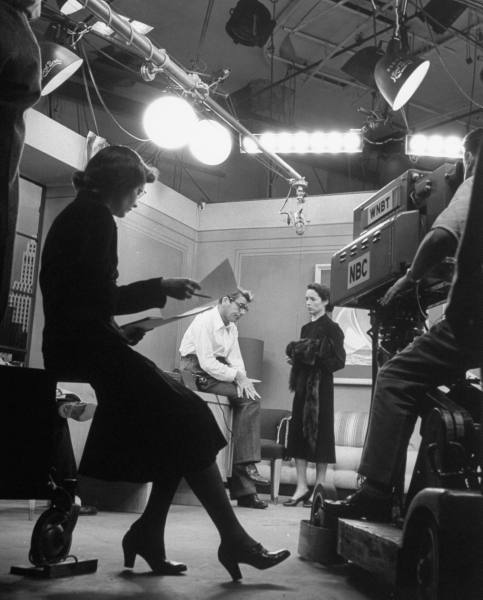
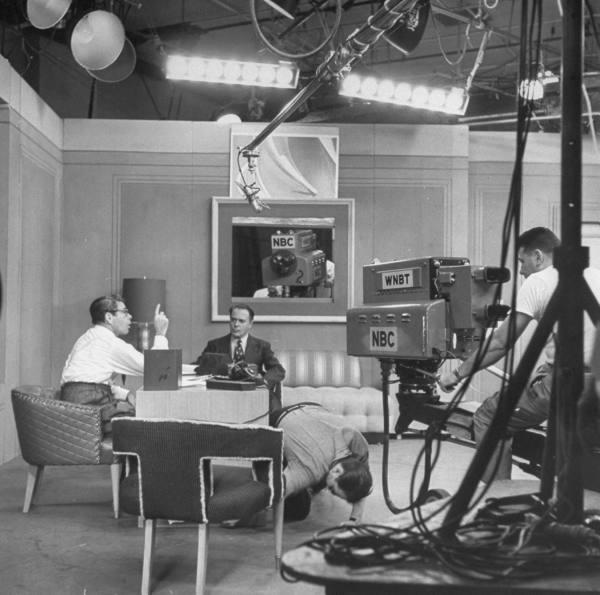
Here they are in use in the October 1948 presentation of the Philco Playhouse in Studio 8G. Notice the wall hanging in the picture above. A pretty clever way to get an otherwise impossible shot.
Studio 8G shots from the spring of 1948.
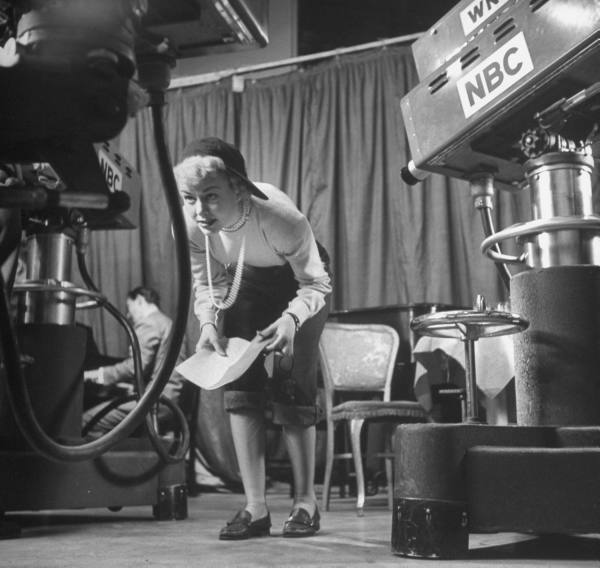

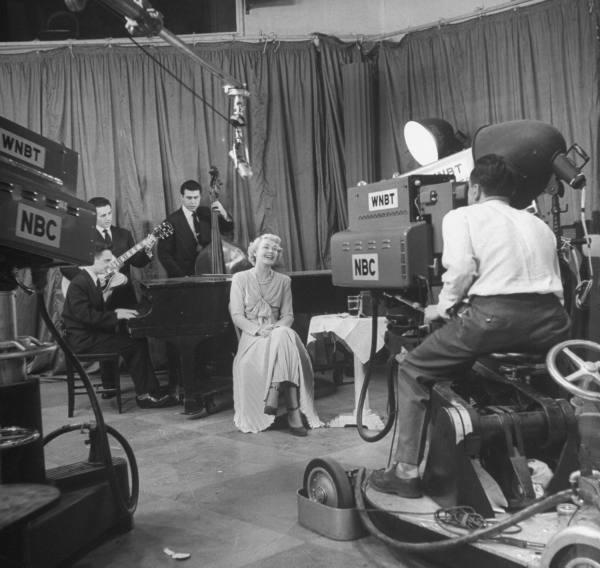
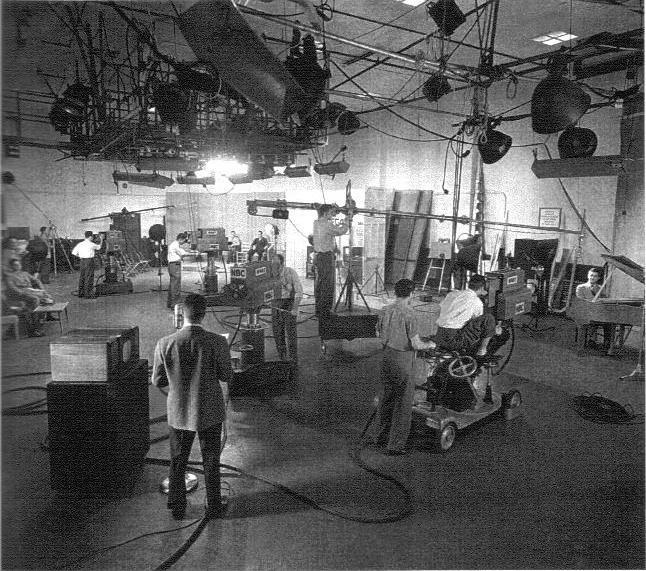
In the only known photo of its kind, here are all 4 of the NBC build cameras at work in Radio City’s Studio 8G…their permanent home. Two more were scheduled to be built and added here, but they never got here. There is a rumor that the four more of these were built and sent to NBC’s new Washington DC station, WNBW in mid 1947, but it is just that…a rumor.
